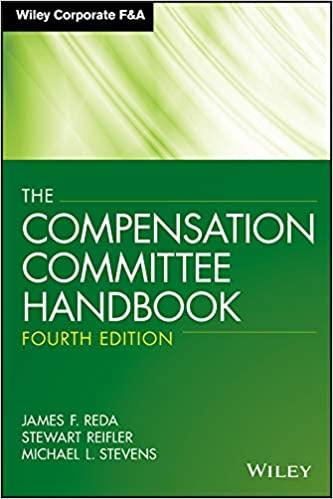Question
Consider yourself the CFO of ToughNut Corp. Management is considering whether the company should refund its $600,000, 12.50% coupon, 10 year bond issue that was
Consider yourself the CFO of ToughNut Corp. Management is considering whether the company should refund its $600,000, 12.50% coupon, 10 year bond issue that was sold at par 3 years ago. The flotation cost on this issue waS $3,000 THAT HAS BEEN AMORTIZING on a straight-line basis over the 10year orginal life of the issue. ToughNut Corp. has a tax rate of 35%, and current short term rates are 6%. You have collected the following data about existing bond and the potential new bond issue:
| existing bond | new bond | |
| capital | $600,000 | $600,000 |
| flotation cost | $3,000 | $2,650 |
| maturity | 10 | 8 |
| years since issue | 3 | 0 |
| coupon | 12.50% | 7.50% |
| call premium | 10.00% | - |
| after-tax cost of new debt | - | 4.88% |
The assoicate financial analyst on the finance team has done some preliminary refunding analysis and submitted the following calculations to you. Consider this as step 1 in the refunding analysis. Assume that the company pays no additional interest on the old issue and earns no interest on short-term investments. Check if the calculations that the financial analyst submitted are correct and match your analysis. Check each box that has a correct value. If a value is incorrect, do not check the corresponding box. Step 1: Determining the initial investment outlay
| before tax | after tax | check if correct | |
| investment outlay | |||
| call premium on the old bond | -$60,000 | -$39,000 | |
| Flotation Cost on new issue | -$2,650 | $2,650 | |
| Immediate tax savs on old flotation cost expenses | $2,100 | $735 | |
| Total after-tax investment | -40,915 |
Step 2: calculating the annual flotation cost tax effects 1. For tax purposes, the flotation cost must be amortized over the life of the new bond, which is 8years. Thus, the after-tax saving every year for the next 8years will be________. 2. ToughNut Corp. However will no linger recieve a tax deduction on the flotation cost on the old issue and will thus lose an after-tax benefit of ___________. 3. The net amortozation tax effeect on the flotation cost is the difference between the old and the new issue, which is ________per year for the next __________years. If the company issues new bonds, the tax savings from amortizing the flotation cost will __________ (increase or decrease).
Step 3: Calculating the annual interest savings 1. The annual coupon payments on the old bonds were $75,000. Thus, the after-tax interest on the old issue is __________. 2. The after-tax interest on the new bond is _______________. 3. Thus, the net annual interest savings after tax will be _______________. a. $19,500.00 b. 25,350.00 c. 23,400.00 d. 21,450.00 At the final stage of the refunding anaysis, you need to calculate the net present values (NPVs) of the savings and costs and the NPV of the entire refunding operation. Step 4: Calculating the NPV of the refunding
| Preseent Value of amortized tax effects | ? |
| Present value of interest savings | ? |
| Net investment outlay | -$40,915 |
| NPV from refunding | ? |
Step by Step Solution
There are 3 Steps involved in it
Step: 1

Get Instant Access to Expert-Tailored Solutions
See step-by-step solutions with expert insights and AI powered tools for academic success
Step: 2

Step: 3

Ace Your Homework with AI
Get the answers you need in no time with our AI-driven, step-by-step assistance
Get Started


